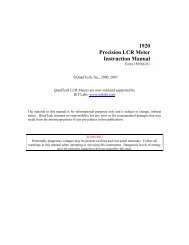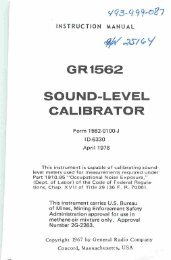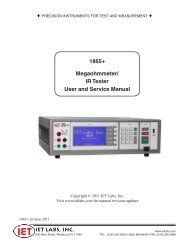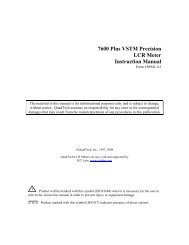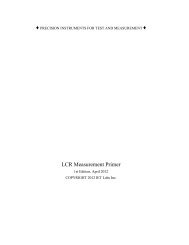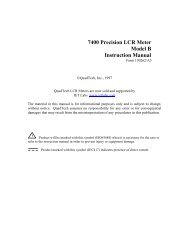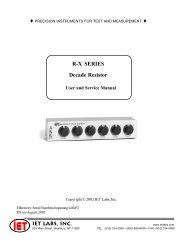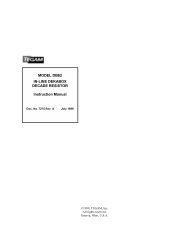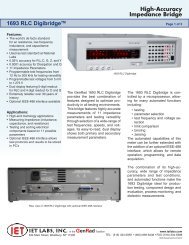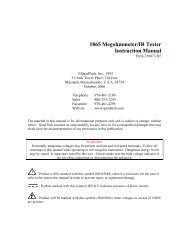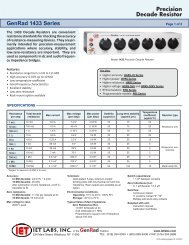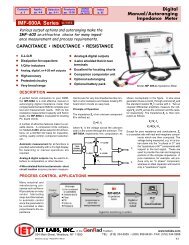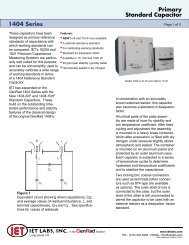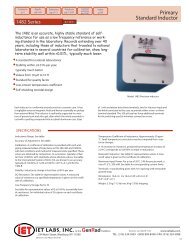Handbook of High Speed Photography - IET Labs, Inc.
Handbook of High Speed Photography - IET Labs, Inc.
Handbook of High Speed Photography - IET Labs, Inc.
Create successful ePaper yourself
Turn your PDF publications into a flip-book with our unique Google optimized e-Paper software.
The subject image will appear to move or jitter if the camera speed is<br />
not stable. The rate <strong>of</strong> this image jitter will increase (or decrease)<br />
depending upon the ratio <strong>of</strong> the camera and projector frame rates.<br />
Figure 6-2. Movie <strong>of</strong> model airplane wing flexture resulting from verti<br />
cal vibration at 190 cps. Camera framing rate is 16 frames-per-second.<br />
The strobe may besynchronized to the camera and event by using<br />
a photo-pick<strong>of</strong>f and a Type 1531-P2 Flash Delay Unit as described in<br />
Section 5-3.1. This provides single-flash exposure <strong>of</strong> each frame when<br />
the shutter is open, allows any phase <strong>of</strong> the subject cycle to be photo<br />
graphed conveniently, and automatically adjusts flash rate to follow<br />
speed variations <strong>of</strong> the subject (see Figure 6-4).<br />
Remember that for<br />
most shutters (which are open 50% <strong>of</strong> the time and which are properly<br />
synchronized), the camera framing rate must not exceed 50% <strong>of</strong> the sub<br />
ject frequency if adequate allowable flash delay is to be provided so<br />
that all phases (360°) <strong>of</strong> the subject cycle can be examined (see Fig<br />
ure 6-5).<br />
Unlike still cameras, conventional movie cameras are not sup<br />
plied with internal mechanical contacts or other synchronizing means.<br />
60



